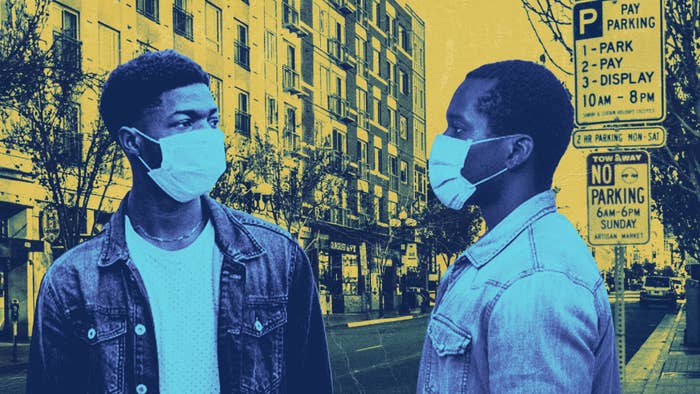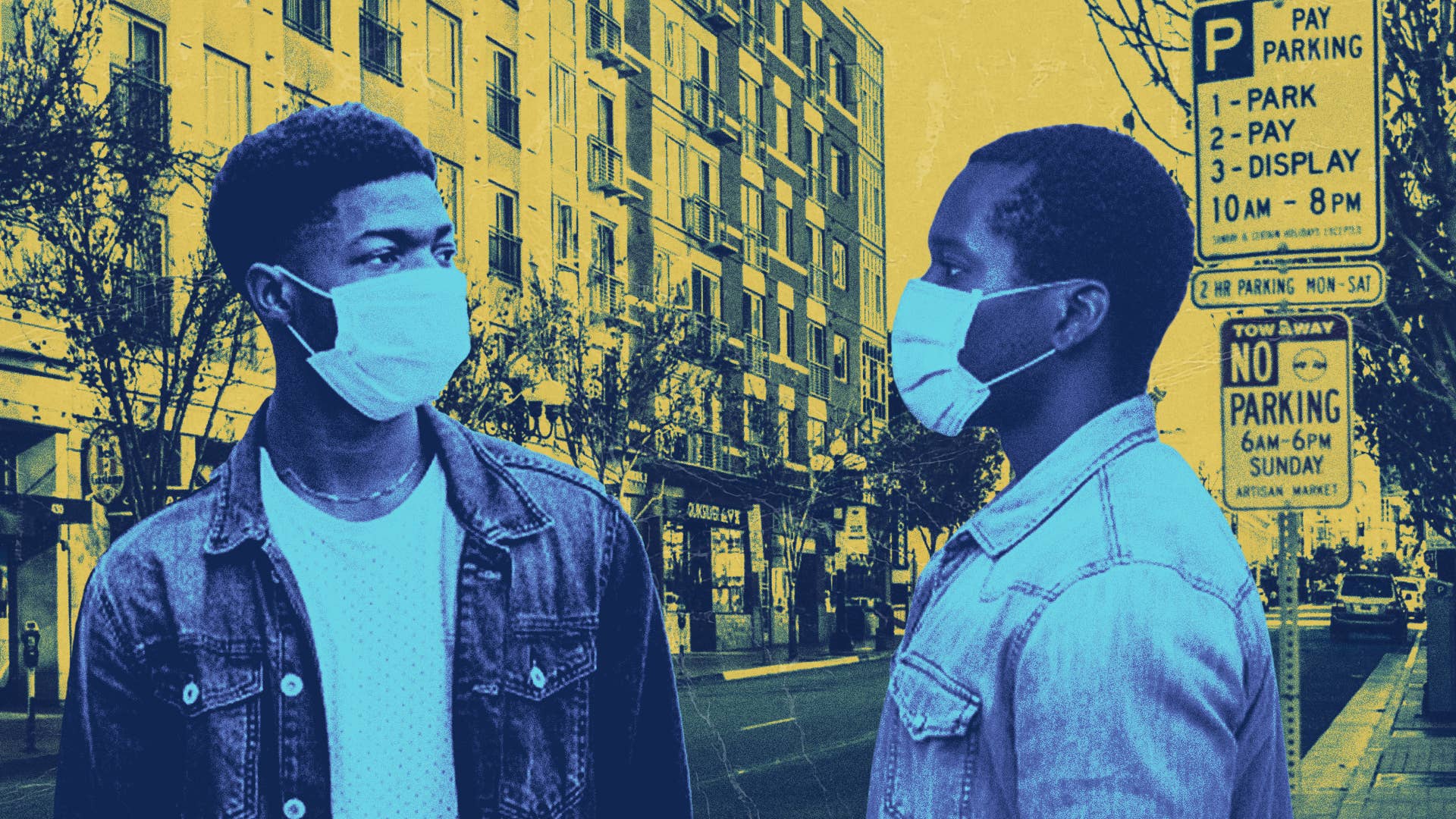
COVID-19 has touched just about every part of the world, but the most impacted group has been the black and brown community. Racial disparities continue to lead to increased mortality rates for African-Americans and Latinxs, with factors like an inability to work from home, pre-existing health conditions, and racial biases in health care preventing these groups from being tested contributing to the problem. In Chicago, African-Americans account for more than half of positive COVID-19 tests and 72% of virus-related fatalities, although they make up less than one-third of the population. In Louisiana, black people—one-third of the state’s population—account for 70% of virus-related deaths. According to the Centers for Disease Control, Latinxs represent more than 27% of virus-related deaths in places deemed virus hotspots, although they make up 18% of the population.
As cities across the country start to reopen, people have been advised to maintain distance from others—a measure that will radically change the way we interact. In April, Anthony Fauci, director of the National Institute of Allergy and Infectious Diseases, said he didn’t “think we should ever shake hands ever again.” And in a New York Times story published this week, 511 epidemiologists and infectious disease specialists expressed their thoughts on when they themselves might resume everyday activities. Six percent of the experts surveyed said they “may never greet people with hugs or handshakes again.” It’s hard to imagine what the world—and our exchanges—will look like in the wake of the pandemic, but small yet critical changes will doubtless be part of the new normal. Something as simple as a handshake may be axed—and for black and brown people, that could mean the end of the dap.
"As long as we have active transmission of COVID-19 and no vaccine, personal greetings should ideally be socially distanced and without physical contact," Danielle Ompad, an associate professor of epidemiology at the NYU School of Global Public Health, tells Complex. “Among my friends, this will likely take the form of a wave, head nod, or verbal greeting from six feet apart.”
The act of dapping someone up is part of a larger black tradition. Hand gestures, head nods, and verbal expressions have long been ingrained in black culture, providing a sense of solidarity and pride. The dap, an acronym for “dignity and pride,” dates to the Vietnam War, when young black men were disproportionately forced into combat. The gestural language symbolized cultural unity, strength, and defiance for black soldiers as they vowed to protect one another.
When thousands of black soldiers returned home, the people in their neighborhoods adopted the dap, iterating upon the original gesture. As dap became more intricate and black culture became more mainstream, the gesture became deeply impactful upon American culture as a whole, appearing in mainstream media and evolving into other forms of embrace. As rap began its move toward the center of American culture in the ’70s and ’80s, so did the verbal and non-verbal vernacular tied to it, which piqued the interest of people outside of black culture, who adopted black style, slang, and even the dap without knowing their origins.
Nonetheless, the salutation remains rooted in African-American tradition and still invokes a familial bond. Chicago interdisciplinary artist Lamont Hamilton studies the intricacies of dap and its inception. “It’s just one of many ways to express love and gratitude, understanding and solidarity—kinfolkness, in other words. I think, if anything, these sentiments will be amplified, as we’ve survived not only the onslaught of the pandemic, but the increased policing violence on our bodies,” he says, calling to mind George Floyd, Breonna Taylor, Ahmaud Arbery, and the many black men and women who have been victims of gun violence at the hands of police and acting vigilantes long before the pandemic.
In a series on human conditions by Great Big Story titled Dignity and Pride Communicated by a Handshake, Hamilton discusses the historical impact of “dap” as it pertains to black culture, a topic he explored in his Five on the Black Hand Side photo series in 2013. “On the surface, the dap does just look like any everyday handshake, but the dap is a gesture of solidarity. It’s not just a handshake,” says Hamilton, having photographed 120 different handshakes and developed a theatrical production, Dapline. Choreographer and co-creator André M. Zachery describes the adaptation as a reflection of very quiet moments between black men. Through his series, Hamilton focuses on the inception of dap and its introduction to black communities.
Variations of the dap have expressed relationships and bonds among families, friends, teachers and their students, and even teammates. NBA powerhouse LeBron James is a prime example of the dap’s cultural impact and spread. The player is known for his choreographed pre-game handshakes that he shares with each of his teammates—a tradition that has survived trades and roster changes and transcended organizations. While James doesn’t remember why he began integrating handshakes into his pre-game routine, he feels the act strengthens ties between teammates and allows them to have fun and loosen up before they put their game face on.
According to James, the daps they create become muscle memory. “You don't forget. You don't forget,” he told Cleveland.com in 2015. “Everybody has their own distinctive handshake. You do it every day. Once you get it down, it becomes like brushing your teeth every day.” But they’ll look different in the wake of the pandemic. James has decided to cease all handshakes and high-fives. “I ain’t high-fiving nobody for the rest of my life after this shit,” he said on an episode of the Road Trippin’ podcast. “No more high-fiving. After this corona shit? Wait till you see me and my teammates’ handshakes after this shit.”
Ompad expects to see similar adjustments across a range of social situations.
“I know some people are bumping elbows or doing foot taps; however, that can bring people within six feet of each other—especially if you are short like I am,” Ompad says. “As an HBCU graduate, if team sports are allowed and homecoming happens, we may have to practice social distancing on the yard, at the step shows, after parties, and all the other events. The band may not be able to march among the crowd after the game because some musical instruments result in aerosol spread.”
That sentiment may become more common as the pandemic plays out. Hamilton sees this moment as pivotal.
“Though it may be prudent post-pandemic to continue to practice [social] distancing, I think when it’s all said and done and the coast is clear, the love for one another will be intensified because we’ll realize once again how fragile the threads holding us together are. And if I can embrace you to strengthen the hold, then I’ll stay near so you don’t fall. I think this is post-pandemic dap care.”
